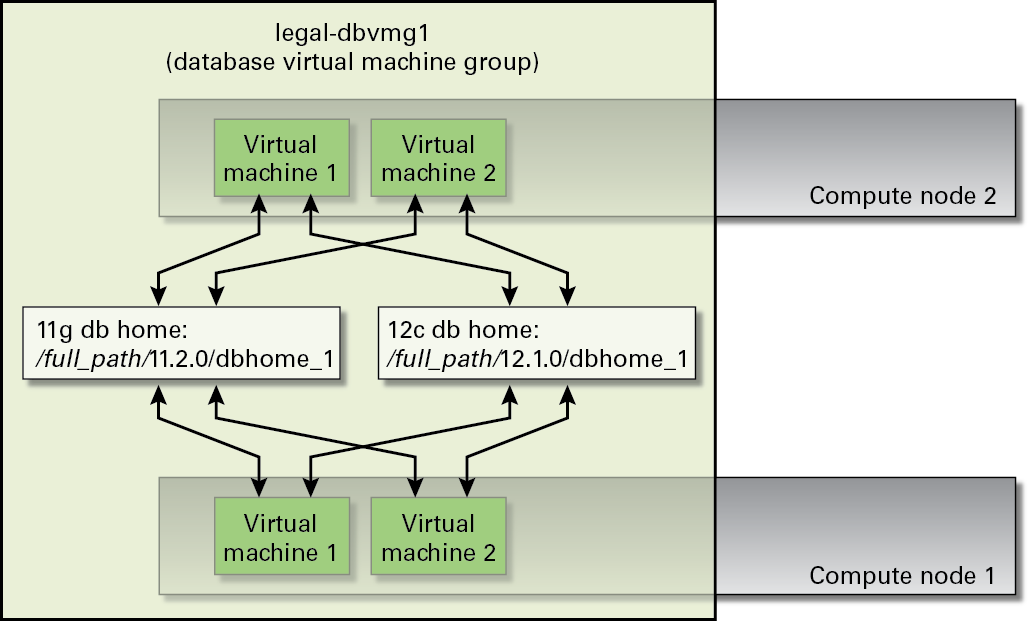Database Home Overview
Before you can create a database home, you must first create a database virtual machine group. See Database Virtual Machine Group Profile Overview for more information.
Once you have created a database virtual machine group and you have the virtual machines within that virtual machine group set up, you must then create one or more database homes for the virtual machines within this database virtual machine group. When you create a database home, you are providing the following:
-
Specific virtual machine group where you want to create the database home
-
Information on the database version that you want (11g or 12c)
-
Directory path for the Oracle Database. The default is /u01/app/oracle/product/release_number/dbhome_number (for example, /u01/app/oracle/product/12.1.0/dbhome_1)
For example, assume you want to create two database homes in the legal-dbz1 database virtual machine group, one for each database version:
-
11g database home — /u01/app/oracle/product/11.2.0/dbhome_1
-
12c database home — /u01/app/oracle/product/12.1.0/dbhome_1
This figure represents how you could envision this.

Note these:
-
You could create multiple 11g or 12c database homes, each with a different directory path. For example, you could create a second 11g database home with the directory path of /u01/app/oracle/product/12.1.0/dbhome_2.
-
All the virtual machines within this particular virtual machine group have access to the database homes that you create in this particular database virtual machine group.
Once you have set up the database homes for the database virtual machine group, you can now create the database instances. See Database Instance Overview.